
The House of Stuart, originally spelled Stewart, was a royal house of Scotland, England, Ireland and later Great Britain. The family name comes from the office of High Steward of Scotland, which had been held by the family progenitor Walter fitz Alan. The name Stewart and variations had become established as a family name by the time of his grandson Walter Stewart. The first monarch of the Stewart line was Robert II, whose male-line descendants were kings and queens in Scotland from 1371, and of England, Ireland and Great Britain from 1603, until 1714. Mary, Queen of Scots, was brought up in France where she adopted the French spelling of the name Stuart.

Paisley is a large town situated in the west central Lowlands of Scotland. Located north of the Gleniffer Braes, the town borders the city of Glasgow to the east, and straddles the banks of the White Cart Water, a tributary of the River Clyde.

Marjorie Bruce or Marjorie de Brus was the eldest daughter of Robert the Bruce, King of Scots, and the only child born of his first marriage with Isabella of Mar.
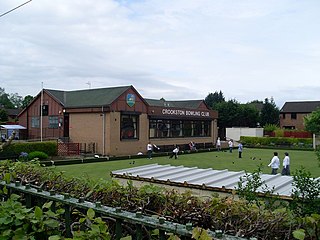
Crookston is a residential suburb on the southwestern edge of the city of Glasgow, Scotland.
Walter Stewart was the 6th Hereditary High Steward of Scotland and was the father of King Robert II of Scotland, the first Stewart monarch.
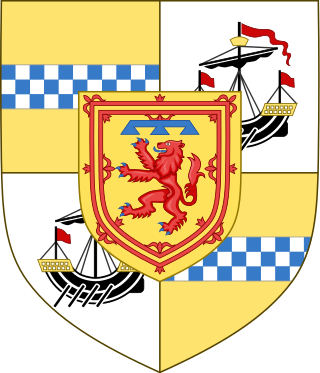
Prince and Great Steward of Scotland is one of the titles of the heir apparent to the British throne. The holder since 8 September 2022 is Prince William, who bears the other Scottish titles of Duke of Rothesay, Earl of Carrick, Lord of the Isles and Baron of Renfrew.

Renfrewshire or the County of Renfrew is a historic county, registration county and lieutenancy area in the west central Lowlands of Scotland. The lieutenancy area covers the three modern council areas of Inverclyde, Renfrewshire and East Renfrewshire, and this area is occasionally termed Greater Renfrewshire to distinguish it from the modern council area called Renfrewshire. The historic county additionally included territory on the south-western edge of Glasgow which was gradually transferred to the administrative area of the city as it grew.
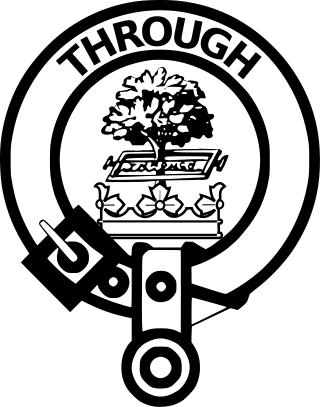
The Clan Hamilton, or House of Hamilton, is a Scottish clan of the Scottish Lowlands.

Alan fitz Walter was hereditary High Steward of Scotland and a crusader.

Strathgryffe or Gryffe Valley is the strath of River Gryffe, which lies within the historic county of Renfrewshire in the west central Lowlands of Scotland.

Clan Stewart is a Scottish Highland and Lowland clan. The clan is recognised by Court of the Lord Lyon; however, it does not have a Clan Chief recognised by the Lord Lyon King of Arms. Because the clan has no chief it can be considered an armigerous clan; however, the Earls of Galloway are now considered to be the principal branch of this clan, and the crest and motto of The Earls of Galloway's arms are used in the Clan Stewart crest badge. The Court of the Lord Lyon recognises two other Stewart/Stuart clans, Clan Stuart of Bute and Clan Stewart of Appin. Clan Stuart of Bute is the only one of the three clans at present which has a recognised chief.
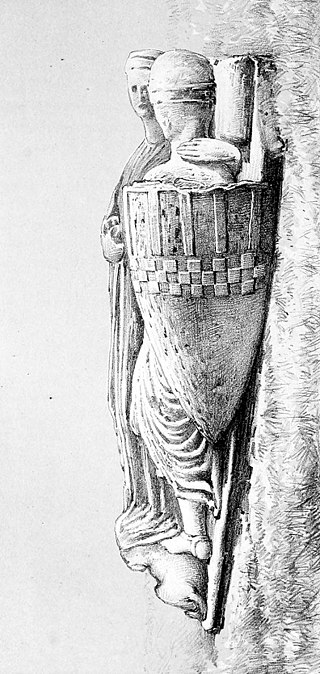
Walter Bailloch, also known as Walter Bailloch Stewart, was distinguished by the sobriquet Bailloch or Balloch, a Gaelic nickname roughly translated as "the freckled". He was the Earl of Menteith jure uxoris.
Sir Walter fitz Gilbert of Cadzow, 1st Laird (Lord) of Cadzow was a Scottish nobleman. The husband to Mary Gordon of Huntly, they wed in 1308 in Cadzcow, Lanarkshire, Scotland. He is the first historically confirmed progenitor of the House of Hamilton, which includes the Dukes of Hamilton, Dukes of Abercorn and Earls of Haddington.
Elizabeth Mure, a member of Clan Muir, was the first wife of Robert, High Steward of Scotland, and Guardian of Scotland, who later became King Robert II of Scotland.

Clan Pollock is an armigerous Scottish clan whose origin lies in a grant of land on the southern bank of the River Clyde, courtesy of King David I, to the sons of Fulbert from Walter fitz Alan, the 1st High Steward of Scotland, in the 12th century. It is among the oldest recorded surnames in Scotland. The clan is a sept of Clan Maxwell.
Renfrew Castle was situated at the royal burgh of Renfrew, Scotland, which is near the confluence of the River Clyde and the River Cart. The original 12th-century castle was built by Walter fitz Alan, Steward of Scotland, upon a river islet known as the King's Inch. This was replaced in the 13th century with a new castle by the road to the Clyde ferry, which became a royal castle under King Robert II. In the 15th century, the King's Inch site was rebuilt as Inch Castle by Sir John Ross. Both castles were demolished in the 18th century and nothing remains above ground at either site.
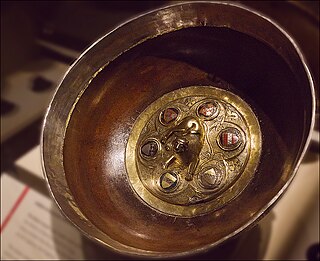
The Bute Mazer, also known as the Bannatyne Mazer is a medieval communal feasting cup of a type known as a mazer. The wood bowl and the elaborate silver-gilt "boss" in the centre are dated "fairly firmly" to between 1314 and 1327 from the heraldry, with the rim and cover about 1500. It is the oldest Scottish mazer still surviving, and one of the oldest and most elaborate British ones. The cup has long been associated with the Isle of Bute, on the west coast of Scotland. Its alternative name derives from Ninian Bannatyne, Laird of Kames, who owned the cup in the 16th century and had his name engraved on the rim. The mazer is now on loan from the Bannatyne family to the National Museum of Scotland in Edinburgh.

Renfrew is a town 6 miles (10 km) west of Glasgow in the west central Lowlands of Scotland. It is the historic county town of Renfrewshire. Called the "Cradle of the Royal Stewarts" for its early link with Scotland's former royal house, Renfrew gained royal burgh status in 1397.

Blackhall Manor is a tower house in Paisley in Renfrewshire, in the western central Lowlands of Scotland. It dates to the sixteenth century, although parts may be older, and formerly belonged to the Stewart or Shaw-Stewart family. It was designated as a Category B listed building in 1971.
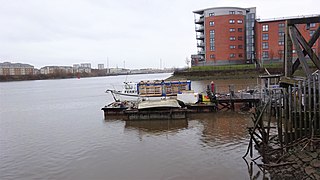
King's Inch and the much smaller Sand Inch were islands lying in the estuarine waters of the River Clyde close to Renfrew in Renfrewshire, Scotland. Due to dredging and a change of the course of the main current of the River Clyde, silting, etc. it has become part of the southern, Renfrewshire side, of the river bank and is now built over.



























